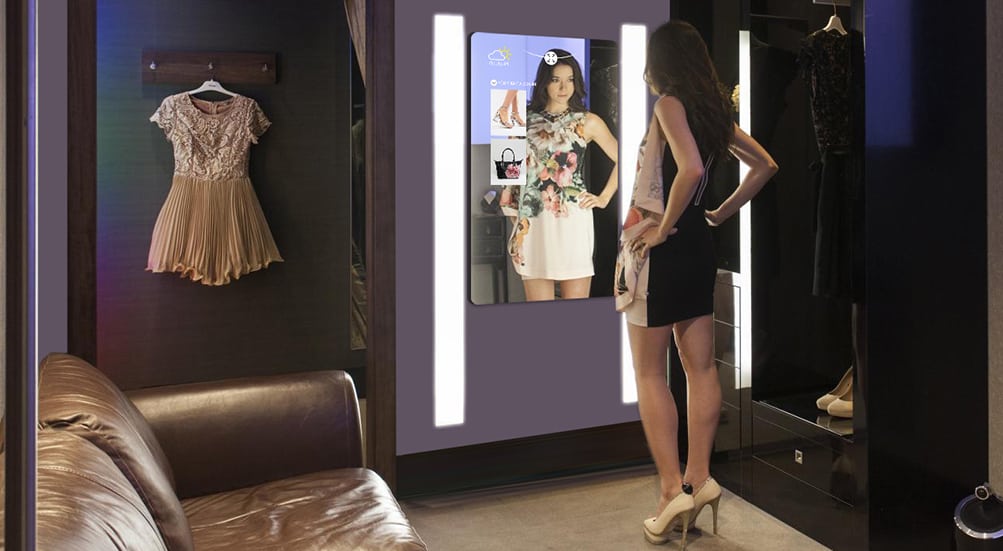
How Touch Screen Mirrors Change the Shopping Experience
In the age of online shopping it is surprising to learn that most customers still prefer to shop in store rather than online[1]. With stories constantly in the press about failing high street brands it’s easy to assume that online shopping is the future of retail. If you look at the statistics though this simply isn’t the case, brick and mortar stores are not dead, they are just changing to adapt to the times. Stores need to create in store experiences for customers and use newer technology to connect with consumers. Mirror PCAP Touch Screens are one device that can do this. In simple terms this display is a commercial grade PCAP Touch Screen with a mirrored finish. These displays can work in a variety of retail stores but mostly for the fashion and beauty industries as they can actively change the shopping experience for customers.
Mirrored displays can be mounted on shop floors but make more of an impact within fitting rooms. The screen itself is a draw for people. Standard Touch Screens are becoming less exiting for customer as everyone now has their own interactive smartphone in their pocket. But a Touch Screen mirror? Not many will have seen that before, the novelty of the display will be big draw and consumers will find it hard not to interact. More importantly by placing the Mirror PCAP Touch Screen in store there is a display that can cater to your customer’s needs.
The fitting room experience can be awkward at the best of times but the technology can help reduce inconveniences for the customer. From more information about a product they are trying on such as alternatives sizes and colours to watching videos of products in action, customers can even make payments online via the Touch Screen from the safe surroundings of the changing room. The customer can feel more informed about purchasing decisions they are making. If the screen is connected to the internet it can be linked to a system that alerts shop workers when a customer’s requires assistance at just the push of a button; the needs of the customer come first. It can also be used by brands to recommend related products for the items the customer is trying on. This ability to browse associated items merges the benefits of online and in store shopping.
The reason that this technology works so well is that it is not forced on the customer. For the unknowing customer the display is just a mirror that they can use for the simple purpose of seeing their reflection as they try clothes on. A mirror is actually a personal experience for any person. A chance to see a reflection of themselves is revealing. Adding the interactive Touch Screen element can deepen the experience for customers.
It would be easy to dismiss the Mirror PCAP Touch Screen as some sort of novelty technology. In a study the [1]‘Future of Retail 2018’ by Walker Sands 73% of those asked said they preferred to shop in a physical store compared to online when buying clothes and apparel. Consumers want to shop but most brands are not giving them a reason to come into store. The Mirror Touch Screen is an experience that can only happen in store and can help you stand out from the rest. Ralph Lauren had interactive mirrors installed in fitting rooms in its flagship store in New York and reported that sales had increased three times and that visitors were now spending longer in store after the interactive mirror was installed[2]. The sales gain is not the only benefits that companies can expect. The fitting room is where visitors can be converted into customers so is a great place to collect analytics. Mirror Touch Screen change the whole shopping experience by getting customers actively involved in the shopping process. Creating an experience and connection and by merging the benefits of online and in store shopping for the customer.
[1]‘Future of Retail 2018’ by Walker Sands
[2]Smart Fitting Rooms: How They Work and Why Stores Need Them

Tom Rock is a Marketing Manager for Allsee Technologies. His background is in Digital Signage and Graphic Design.


